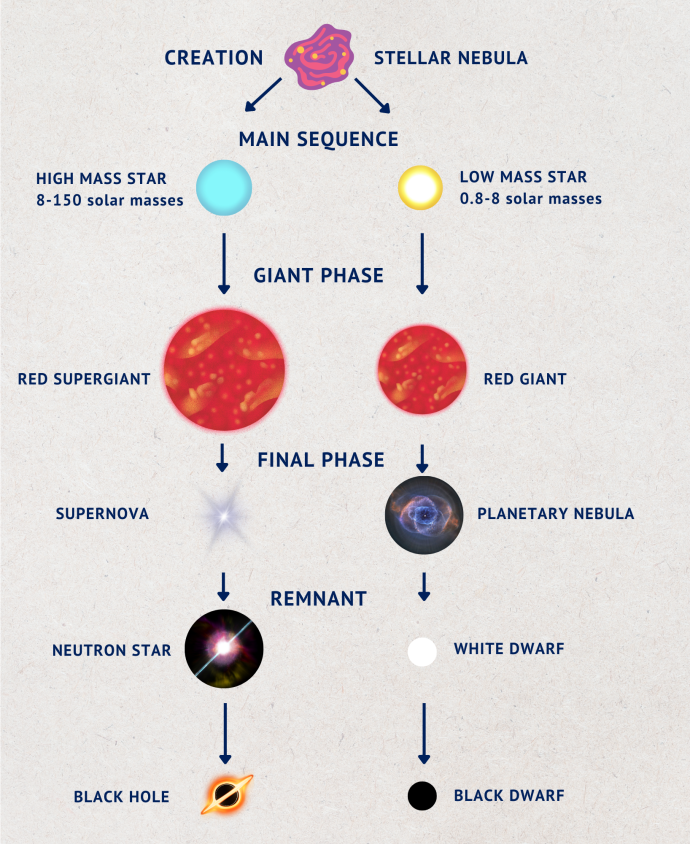Star Formation
Stars form in huge clouds of gas and dust called nebulae. These areas of space are sometimes known as 'stellar nurseries' or 'star forming regions'.

Stellar Evolution
All stars form in nebulae, huge clouds of gas and dust.
Though they shine for thousands of years, stars do not last forever. The changes that occur in a star over time and the final stage of its life depends on a star's size.

Pair the Stages of a Star
Though they shine for many thousands, and even millions of years, stars do not last for ever. They ignite, burn, and then run out of fuel and go out.
Can you match the images of each stage of a star's existence to the correct description?
Identify the Nebula
The word nebula is used to talk about any dusty, fuzzy objects in space but they can be very different things! Can you classify each image into its proper category?
Order the Stages of a Star
During their lives, stars undergo massive changes. What happens to them depends on how much mass they contain.
Can you put the stages that a low mass star and a high mass star will go through in the correct order on the diagram?
